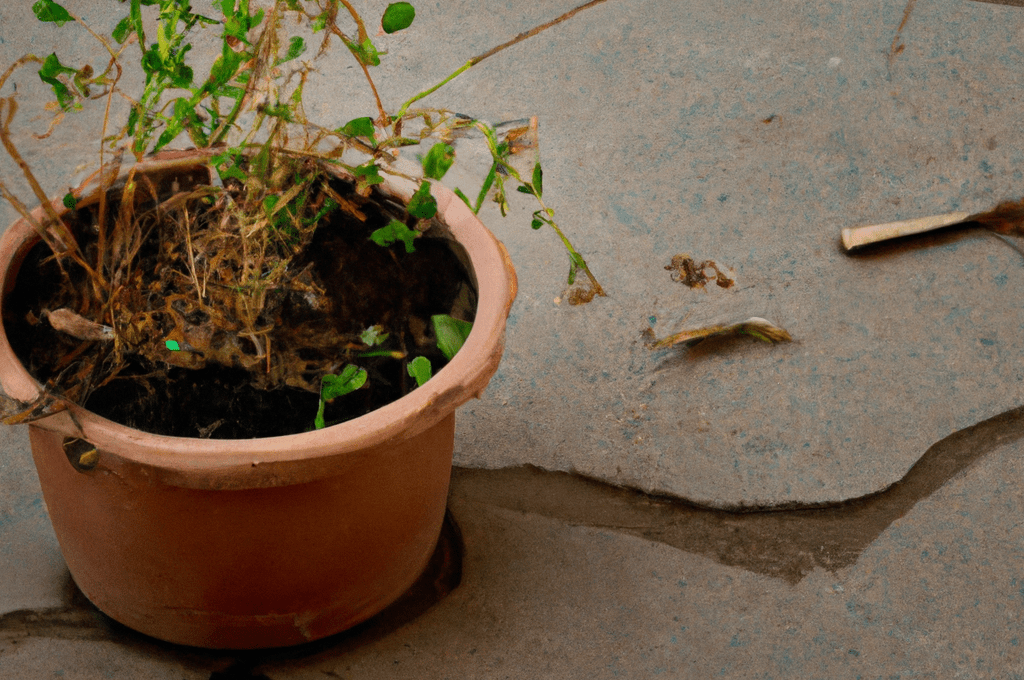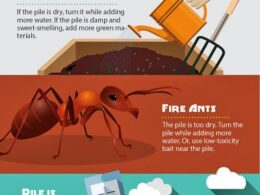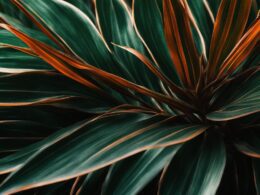Are your potted plants not thriving like they used to? Have you noticed a decline in their health and growth? If so, it might be time to check the quality of your potting soil.
Potting soil is a crucial component for any container gardening enthusiast, but it can degrade over time and lose its beneficial properties. In this article, you’ll learn how to recognize the signs of potting soil degradation, how to handle potting mix properly, and how to ensure your potted plants are receiving the necessary nutrients to thrive.
Potting soil degradation is not always easy to spot, but it can have a significant impact on the health of your plants. Over time, potting mix can become compacted, reducing its ability to retain water and nutrients. Additionally, potting soil can become infested with harmful bacteria and fungi, leading to root rot and other plant diseases.
By understanding the signs of potting soil degradation, you can take steps to prevent it and ensure your plants are healthy and thriving. So, let’s dive in and explore the world of potting soil and how to keep your plants happy and healthy.
Quick Summary
- Potting soil can degrade over time, harming plant health and growth.
- Fertilizer additives can extend the life of potting soil and provide necessary nutrients, but should be chosen carefully based on plant requirements.
- Used potting soil should be recycled or disposed of properly to prevent pests and diseases.
- Regular inspection and replacement of potting soil is crucial for optimal plant growth and health in container gardening.
Potting Soil Degradation
If you’ve been using the same potting soil for over six months, it may have degraded in texture, nutrient levels, and moisture content. This means that the soil may have become clumpy or compact, making it difficult for plant roots to grow and absorb nutrients.
Additionally, the moisture content may have shifted, either becoming too dry or too damp, which can also harm your plants. Texture changes in potting soil refer to how the soil particles have clumped together over time. This can happen due to exposure to air, water, and sunlight, causing the soil to become hard and difficult to work with.
Moisture content changes can also occur, and this can affect how well your plants grow. Too much moisture can lead to root rot and other fungal diseases, while too little moisture can cause your plants to wilt and die. It’s important to monitor your potting soil and make sure it’s not past its prime.
How Does the Shelf Life of Fertilizer Compare to Potting Soil?
The fertilizer shelf life duration varies depending on the type and brand of fertilizer. In general, most fertilizers can last for around one to three years when properly stored. On the other hand, potting soil has a longer shelf life, typically lasting up to five years. It’s important to check the expiration dates and storage recommendations to ensure optimal effectiveness of both fertilizer and potting soil.
Fertilizer Additives
You can extend the life of potting soil with fertilizer additives by ensuring it’s kept in proper storage conditions and used within the recommended time frame. Here are some benefits and drawbacks of using potting soil with fertilizer additives:
-
Benefits:
- Fertilizer additives can provide nutrients to your plants for up to six months, eliminating the need for frequent fertilization.
- They can improve the texture and moisture retention of the potting soil, creating a favorable environment for plant growth.
- They can help prevent over-fertilization and nutrient burn, as the slow-release formula releases nutrients gradually.
-
Drawbacks:
- Over time, if the potting soil is exposed to moisture, the coating on the slow-release fertilizer can break down, rendering it ineffective.
- The fertilizer additives can increase the cost of the potting soil, making it more expensive than plain soil.
- Some plants may require specific nutrients that aren’t present in the fertilizer additives, so it’s important to choose the right fertilizer for your specific potted plants.
When choosing the right fertilizer for your potted plants, consider the type of plant you’re growing and its specific nutrient requirements. Look for a fertilizer with a balanced N-P-K ratio, which represents the amount of nitrogen, phosphorus, and potassium in the fertilizer. Additionally, consider the pH level of the potting soil and choose a fertilizer that’s compatible with the soil’s pH. By choosing the right fertilizer and storing it properly, you can ensure that your potting soil with fertilizer additives will provide optimal benefits for your potted plants.
Used Potting Soil
To determine if your potted plants are suffering from nutrient deficiencies, inspect the condition of the leaves and consider using fresh potting soil. Used potting soil has minimal nutritional value left and can encourage mildew, fungus, mold, and pests to take hold. Signs that potting soil is bad include a strong rotten smell and insect infestation. If you notice any of these signs, it’s best to replace the soil to ensure your plants receive the nutrients they need to thrive.
When it’s time to replace your potting soil, consider recycling your old soil by using it in your garden beds. However, it’s important to note that used potting soil should not be used in vegetable gardens due to the risk of disease and pests. Instead, use it in non-edible garden beds or mix it with compost to create a nutrient-rich soil for your plants. To prevent pests from taking hold in your potting soil, be sure to store it in a dry location and avoid overwatering your plants. By taking these precautions, you can ensure your plants receive the nutrients they need to grow strong and healthy.
| Preventing Pests | Garden Bed Recycling | ||
|---|---|---|---|
| Store soil in a dry location | Use old soil in non-edible garden beds | ||
| Avoid overwatering plants | Mix old soil with compost | ||
| Keep an eye out for signs of infestation | Reduce waste by recycling soil | Dispose of any infested soil properly to prevent spreading pests. |
Frequently Asked Questions
Can potting soil be reused after a plant dies?
Yes, you can reuse potting soil after a plant dies. Soil regeneration is possible by adding fresh soil or compost to the old soil to improve its nutrient content. Make sure to remove any dead plant remains and pests before reusing.
Is it safe to use expired potting soil?
Using expired potting soil can harm your plants. Instead, try soil rejuvenation techniques like adding compost or perlite to improve texture and nutrient levels. Gardening tips like proper storage can also extend the life of your soil.
How often should potting soil be replaced?
To ensure healthy plant growth, test soil quality annually. Replace potting soil if it has a strong odor, insect infestation, or mold growth. Consider soil amendment options to improve nutrient levels and texture.
Can adding more fertilizer to old potting soil revive it?
Adding more fertilizer to old potting soil can help revive it, but it’s important to use the right fertilizing techniques. Consider adding organic matter and using slow-release fertilizers to provide nutrients over time for healthier plants.
What are some alternatives to using potting soil for potted plants?
Looking for alternatives to potting soil for your potted plants? Consider hydroponic systems or using coconut coir, which is a sustainable and renewable option. These options provide the necessary nutrients and moisture for healthy plant growth.








